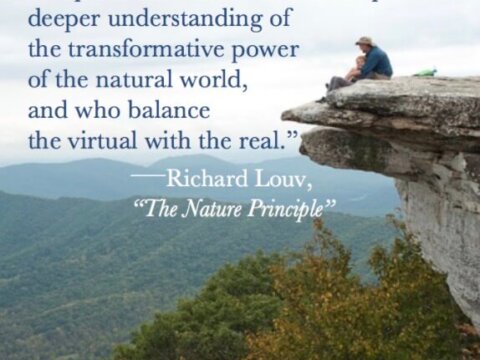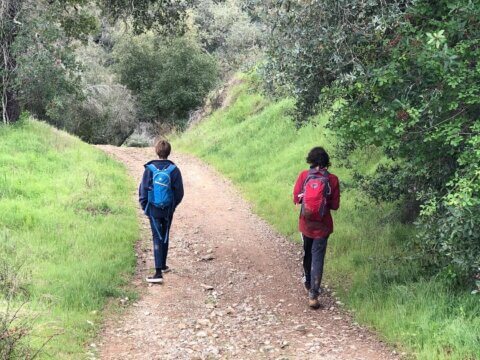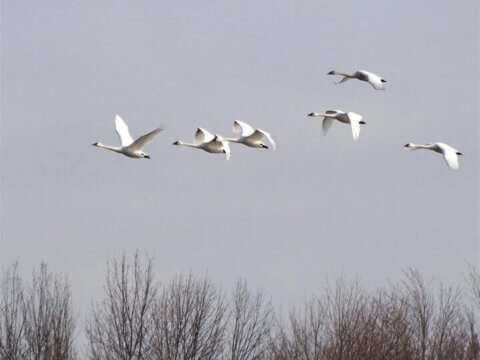Bridging generations: Intergenerational connections to nature in Minnesota
“We do not inherit the Earth from our ancestors; we borrow it from our children.” This provocative perspective invites us to consider not only our responsibility to the natural world but also the importance of fostering connections across generations.
The many benefits to be derived from intergenerational experiences have been well studied and publicized. The Children & Nature Network’s research library highlights studies showing the benefits of intergenerational connections in nature. Generations United, a national organization that advocates for children, youth and older people through intergenerational collaboration and programs, summarizes many of these in their Fact Sheet: Intergenerational Programs Benefit Everyone. Both sources show a range of physical, mental, social and educational benefits for both children and older adults — including stress reduction, improved physical health and stronger social connections. Children & Nature Network co-founder and author Richard Louv shared his reflections on intergenerational connections in nature in his 2013 column, “21 great ways grandparents and grandfriends can connect kids to nature.”
The benefits that come with intergenerational connections — together with the increase in the older adult demographic — have led Generations United to conclude that “intergenerational programs are meaningful, important, and fun — and they are booming across the U.S. and around the world.”
Nature-based intergenerational programs in Minnesota
With support from an Age-Friendly Minnesota community grant, I examined what is happening across Minnesota to support access to nature as we age. My findings are recorded in “A Field Scan of Older Adults and Nature in Minnesota” and featured, along with other resources, in the Age-Friendly Minnesota Nature Resource Center. In my research, intergenerational opportunities surfaced as a powerful motivator for older adults to be outdoors in nature alongside grandchildren and younger people from their community. Below are several Minnesota-based efforts to connect people across generations in nature.

Participants in the AGE to age program tend a raised-bed garden in Bigfork, Minnesota. Photo credit: Northland Foundation.
Northland Foundation’s AGE to age program
The Northland Foundation, a regional funder serving the mostly coniferous forest and lakes of the Arrowhead region in Northeastern Minnesota, has connected young people with elders and adults age 55+ through their AGE to age program since 2008. The program builds friendships and social connections while also benefiting its mostly rural communities. Each AGE to age community site develops an action plan while receiving technical support, funding and learning opportunities from the foundation and its partners.
Several AGE to age action plans include intergenerational activities that occur outdoors and in nature. “Northeastern Minnesota has an abundance of opportunities to create nature-based activities,” says Taylor Holm, Northland Foundation Program Officer. “Our AGE to age partners take advantage of this by offering activities such as gardening, fun runs, trips to local parks, hiking, fishing and skiing. Despite the wide variety of activities, they all fulfill the same mission: bringing generations together and creating lasting relationships among children, older adults and the generations in between in their communities.”
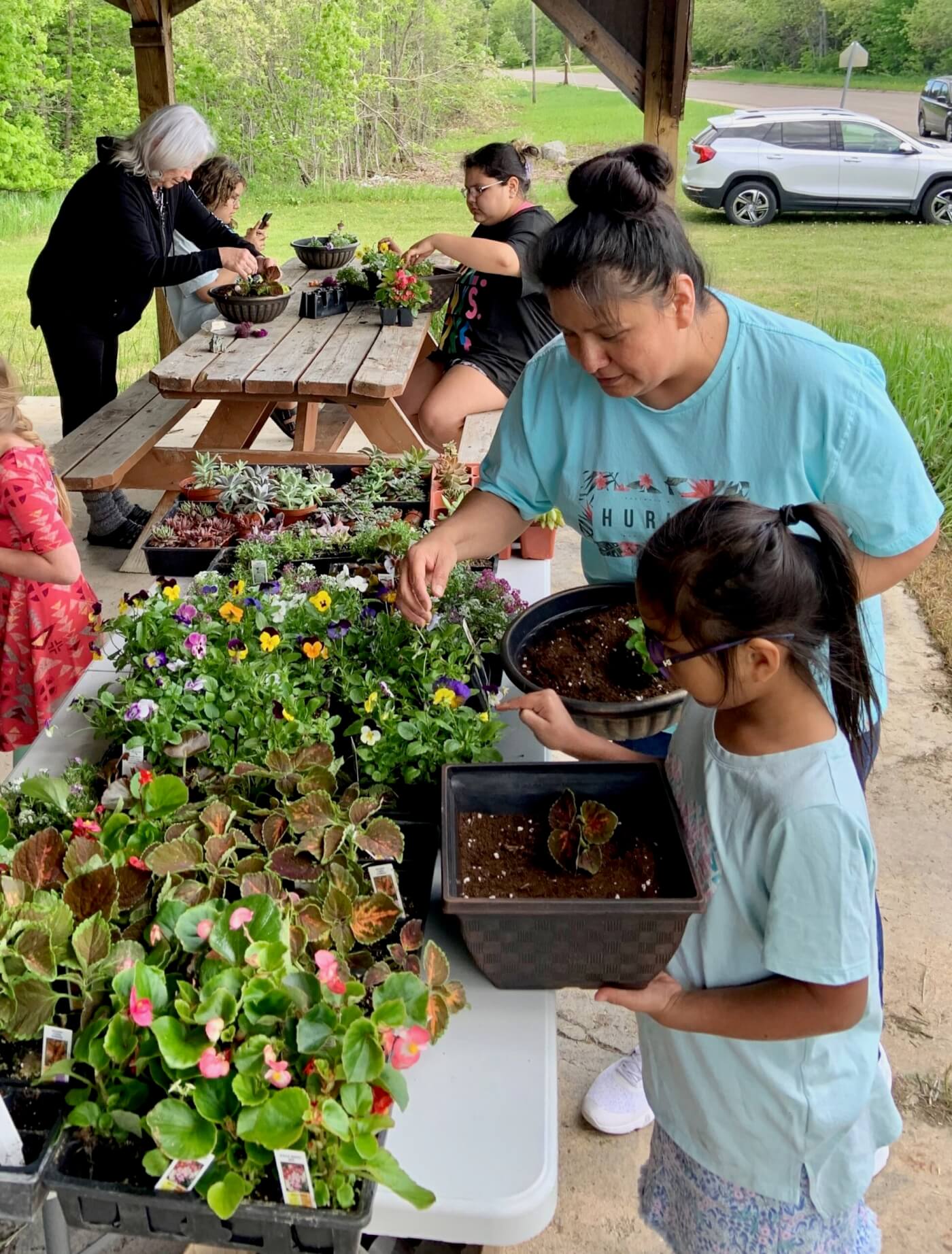
Intergenerational community gardening through an Age to age program in Finland, Minnesota. Photo credit: Northland Foundation.
When asked about the benefits of their nature-based intergenerational efforts, AGE to age program leaders shared the following:
- The natural world offers many opportunities to learn together. Stepping outside more traditional classroom settings upends the teacher-learner dynamic, fostering collaborative exploration and mutual discovery.
- Both generations share their nature observations and stories. For example, adults might explain who first taught them about birds or edible plants. Children see the world through a different lens — noticing new colors, shapes and sounds — and are eager for adult attention and interest.
Children and adults can be as loud and active as they wish outdoors. As a result, they are often freer and more wholly themselves. It can be fun and even surprising for kids to see a more youthful and expressive side to adults.
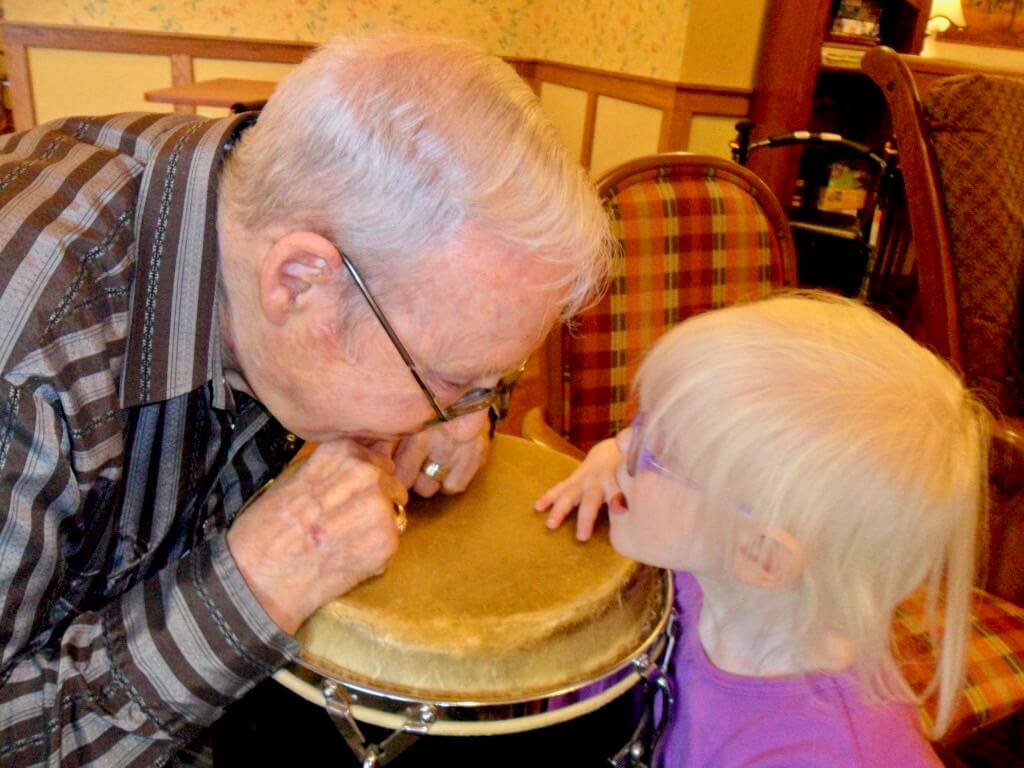
At an All Seasons Preschool nestled inside a senior living facility in Inver Grove Heights, Minnesota, a couple of drummers enjoy a moment of connection during weekly rhythm band practice. Photo credit: All Seasons Preschool.
All Seasons Preschool — onsite in senior living
In 2007, childhood educators Amy Lemieux and Sarah Sivright began dreaming about pairing a nature-based preschool with a senior living program. Two years later, they opened All Seasons Preschool. Located within Inver Glen Senior Living, the preschool is nestled amidst acres of deciduous woods, rolling fields and flowering sumac in Inver Grove Heights. In 2020, a second preschool was added within Lexington Pointe Senior Living in Eagan.
Adaptability has been a big part of All Season Preschool’s success. Both sites are housed inside buildings for older adults in independent living, assisted living or memory care. Originally, the plan was for the preschoolers to spend most of their intergenerational time with people in independent living. That quickly shifted when Sivright and Lemieux discovered that many of the people in independent living were too busy to take part in the intergenerational activities, while spending time with the people living in memory care was magical for the children — just the right fit for both preschoolers and older adults.
The beauty of sharing one roof is that the generations spontaneously see each other every day, sometimes for scheduled activities, sometimes in passing — outside on the walking trail, in the gardens, watching birds or in front of the cozy fireplace. These regular, repeated interactions have one goal: To create a community. As Sivright observes, “We need each other. We need them and they need us. These are real connections with real people.”
Children interact with the older adults every day at the preschool through activities such as music, art, cooking, games and reading. Engaging all of the senses is a big part of what they experience together. This can range from helping to weed a raised-bed garden to activities involving butterflies, leaves, pinecones and snow on trays that bring nature indoors.
As Lemieux points out, “There are clear differences between the two populations, but when we are together, the similarities are what really stand out.” Director Sarah Kern notes that the children learn to be comfortable around older people. They gain confidence and develop social skills, including speaking clearly and loudly, shaking hands, asking questions and sharing stories with the older adult residents. For the memory care residents, spending time with children helps alleviate boredom and loneliness, and provides them with a sense of connection and purpose.
All Seasons Preschool even has an ”All Seasons, All Stories” podcast, capturing the voices and perspectives of both generations.
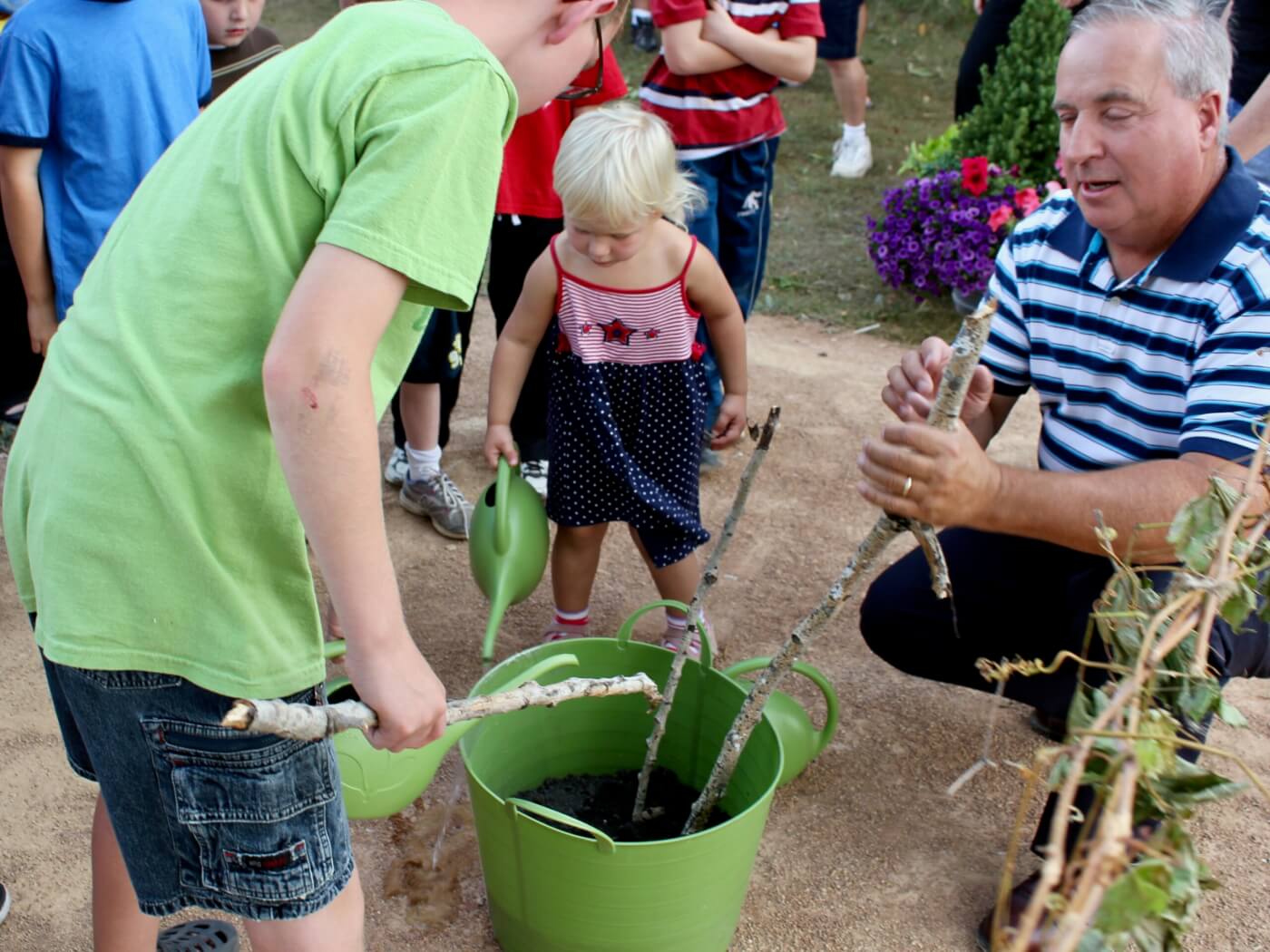
Castle Park Nature-Based Play Space grand opening and inaugural mud mixing in Crookston, Minnesota. Photo Credit: Polk County Public Health.
Polk County Public Health’s multigenerational focus
As a public health agency in rural northwestern Minnesota, Polk County Public Health (PCPH) focuses on policy, system and environmental changes to help make healthy choices accessible for all. Since 2012, the agency has prioritized nature-based multigenerational engagement, play and experiences. Led by PCPH, a nature-based play space at Castle Park in Crookston was conceptualized, developed and built by community partners, including retired, older community volunteers. These engaged community members continue to use the space on their own and to attend events, often bringing young family members. Kirsten Fagerlund, PCPH Community Wellness Team Coordinator, notes, “We continue to see multiple generations not only attending events, but also engaging in hands-on play — not just sitting on a bench watching.”
Fagerlund also partners with the nursing students from the University of North Dakota during their public health rotation. The most recent cohort met and discussed childhood play memories with residents at a senior living facility in East Grand Forks, Minnesota. They also conducted a rollability/walkability audit of parts of the community. The students then presented information on the benefits of nature to the seniors — followed by making s’mores. Such opportunities impact future leaders and their views of how people can engage in the outdoors as they age.
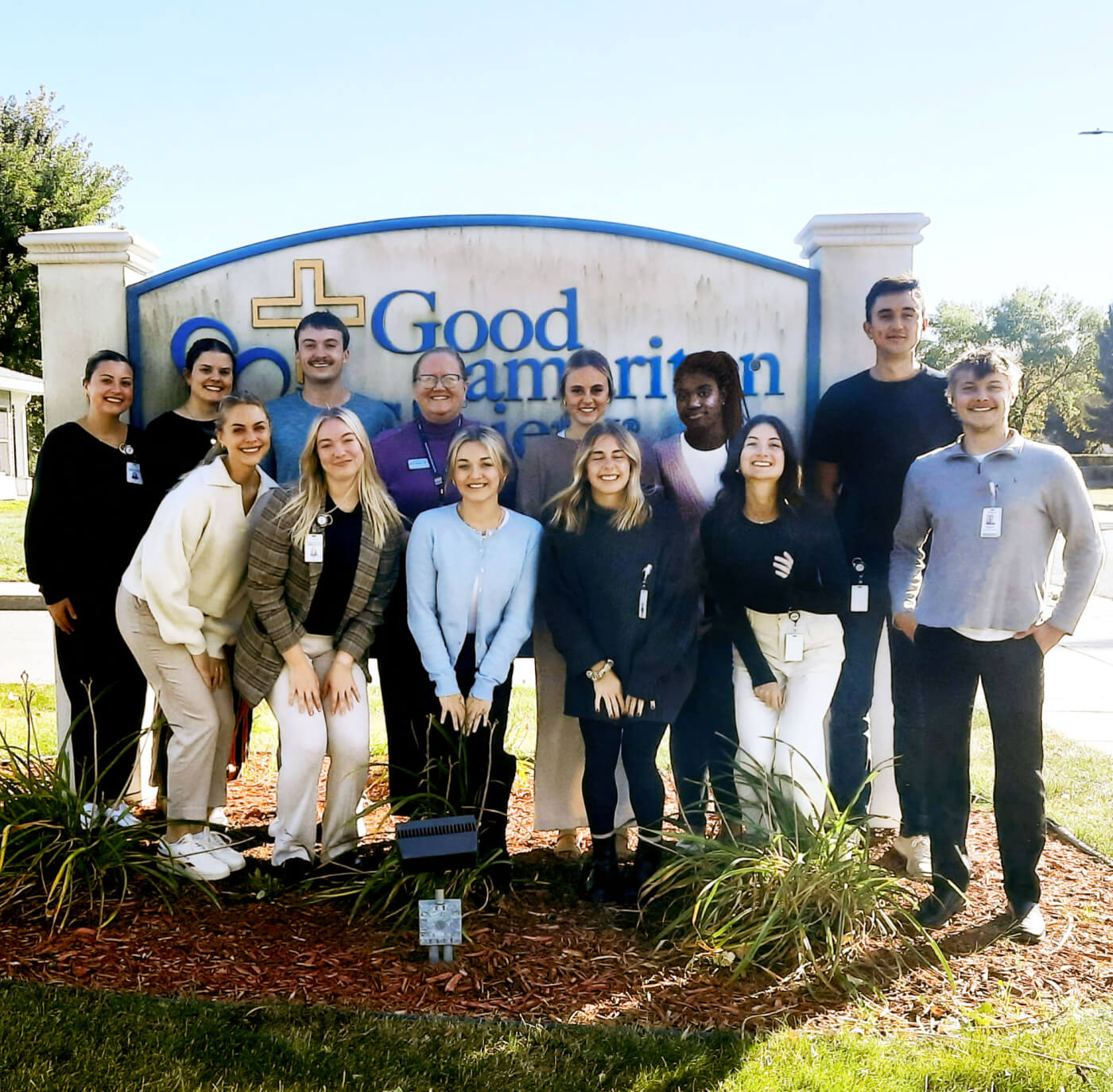
At a senior living facility in East Grand Forks, Minnesota, nursing students learn about older adult experiences with outdoor play. Photo credit: University of North Dakota.
To learn more about these and other efforts, visit the Children and Nature in Northwest Minnesota Facebook group.
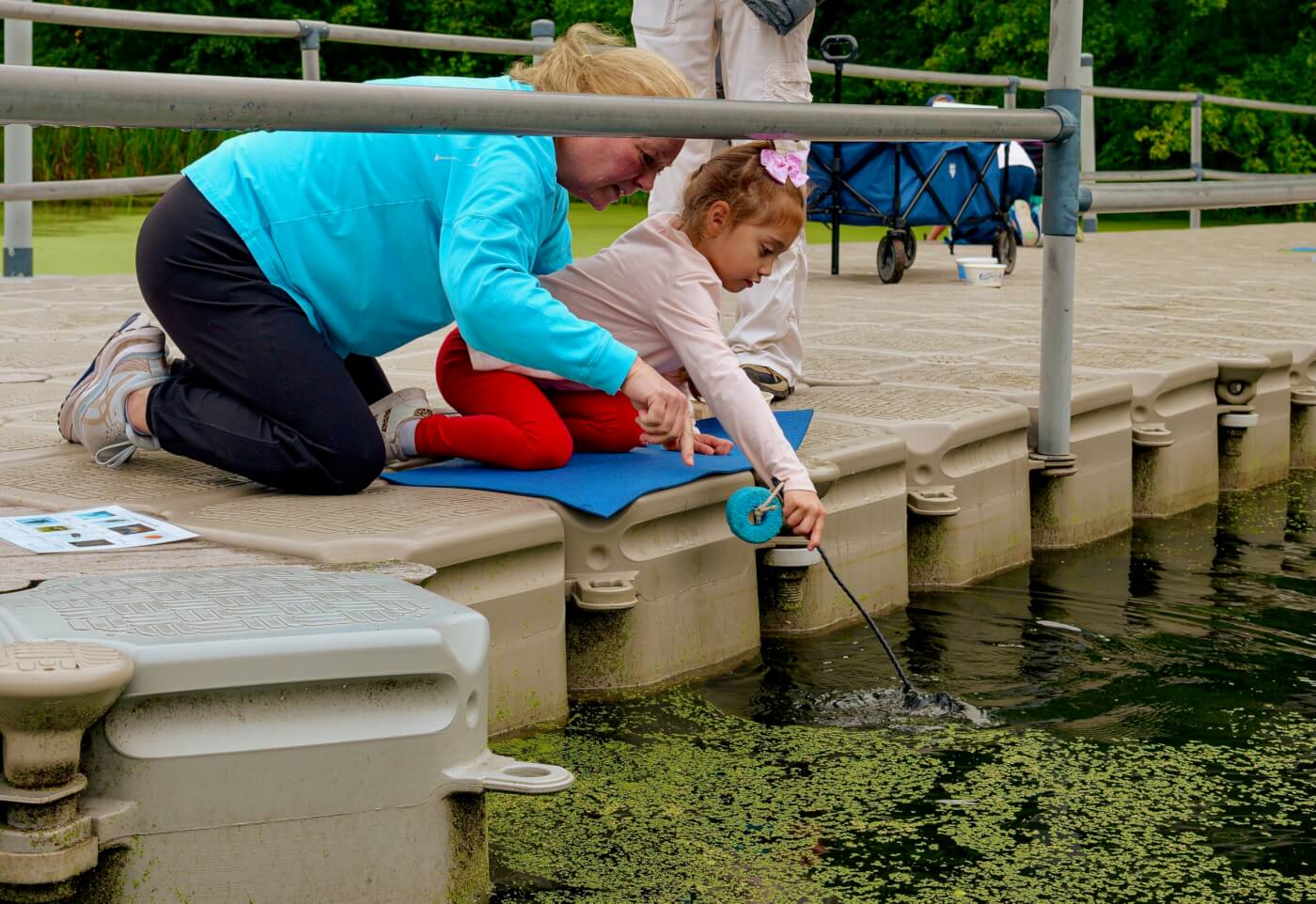
Pond exploration at Grandparent Camp in the Three Rivers Park District, Minnesota. Photo Credit: Three Rivers Parks
Three Rivers Park District: Grandparent Camp
Three Rivers Park District promotes environmental stewardship through recreation and education in a Twin Cities area natural resources–based park system that encompasses over 27,000 acres of parks and trails and serves millions of visitors annually.
One of the many programs run by Three Rivers is Grandparent Camp, which brings younger and older people together in both half-day and overnight camping experiences in several park locations. Overnight campers stay in rustic log cabins. The experience is supported by Three Rivers staff who do the cooking and provide naturalist-led activities such as insect-catching, archery and crafts. Or, if the campers prefer, they can spend time relaxing on their own.
Anne Jaeger, Three Rivers Park District Naturalist, notes that the increase in grandparents providing care for grandchildren is part of the program’s popularity. “We have grandparents seeking opportunities to connect outdoors with their grandchildren,” she explains.
The intergenerational relationship-building isn’t limited just to familial ties, either. “The beauty of the Grandparent Camp experience is that by the end of our time together, it’s not clear which kids came with which adults,” says Jaeger. Her reflections on spending time in the woods learning about nature and building special memories across generations are captured in “Why We Love Grandparent Camp,” a blog post.
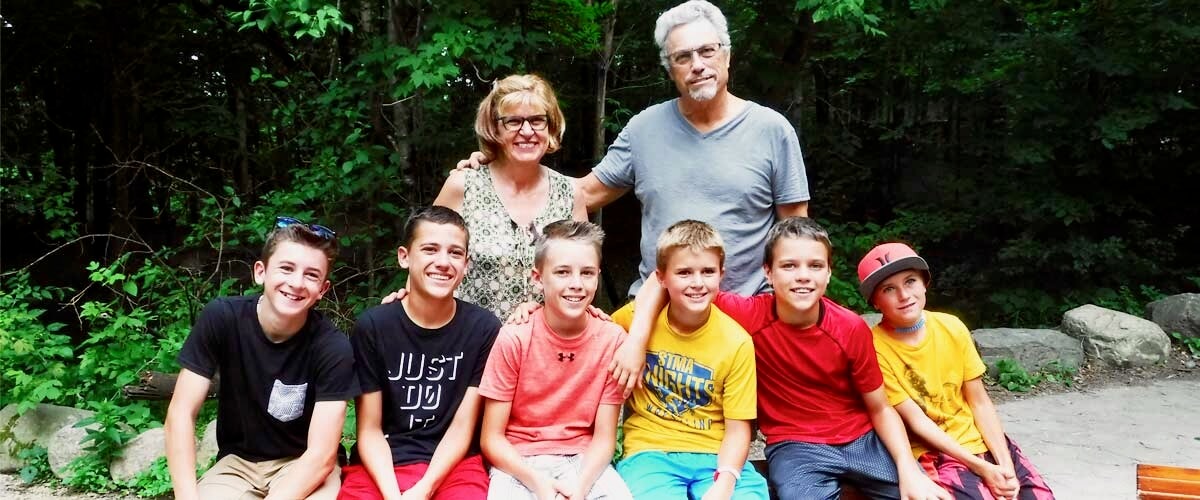
A special bond between grandparents and grandchildren grows at Grandparent Camp. Photo credit: Three Rivers Parks.
Intergenerational connections between children and older adults can flourish for several reasons, many rooted in psychology, social dynamics and biology. The two groups often have complementary strengths: children bring energy, curiosity and a sense of wonder to these relationships, while older adults offer life experience, stories, wisdom and patience. In addition, relationships between children and older adults typically lack the disciplinary dynamic present between children and their parents, allowing more relaxed interactions. These interactions can foster genuine affection and bonding — nurturing relationships that can combat loneliness and provide a sense of purpose for older adults, while offering unconditional support and acceptance that boost children’s confidence.
Bringing nature into the mix — as all of the program leaders who contributed to this article point out — adds to the magic that is experienced by all.
Joelle and a panel of intergenerational program leaders will be presenting on intergenerational connections in nature at the Children & Nature Network’s annual Nature Everywhere Conference, May 13-16, 2025, in Saint Paul, Minnesota.
Generations United:
- Play for All Ages: Designing Intergenerational Spaces That Build Connections and Encourage Learning webinar (March 2024)
- Shared Site Newsletter Spring 2024 on creating intergenerational play spaces that foster cross-age connection, creativity, and learning
- Healthier Lives Across Generations: A Blueprint for Intergenerational Living, a call to action and a strategic plan designed to promote intentional intergenerational housing and communities that foster meaningful interactions among people of all generations
National Recreation and Park Association
- Forging Connections Across Generations, interviews with staff at five park and recreation sites to understand the role of park and recreation spaces and services to support older adults and foster social and intergenerational connections, including an overview summary and case studies.
Flourish: The impact of an intergenerational program on third grade students’ social and emotional wellbeing with application to the PERMA Framework. The aim of this study was to measure the impact of the intergenerational program, ‘Flourish’, on student social and emotional wellbeing. (TEACH, 2020)
Strengthening intergenerational connections (Nature Aging, 2021)
-
Network News
POLICY UPDATE: Policy and advocacy for the children and nature movement
-
Voices
Binoculars, bald eagles and my journey as a Black birder
-
Richard Louv
THE WONDER BOWL: Ten Spring and Summer Nature Activities for Kids and Adults
-
Network News
Minneapolis Spotlight: The promise and possibilities of parks for youth
-
Voices
Why nature is my motherhood ally




